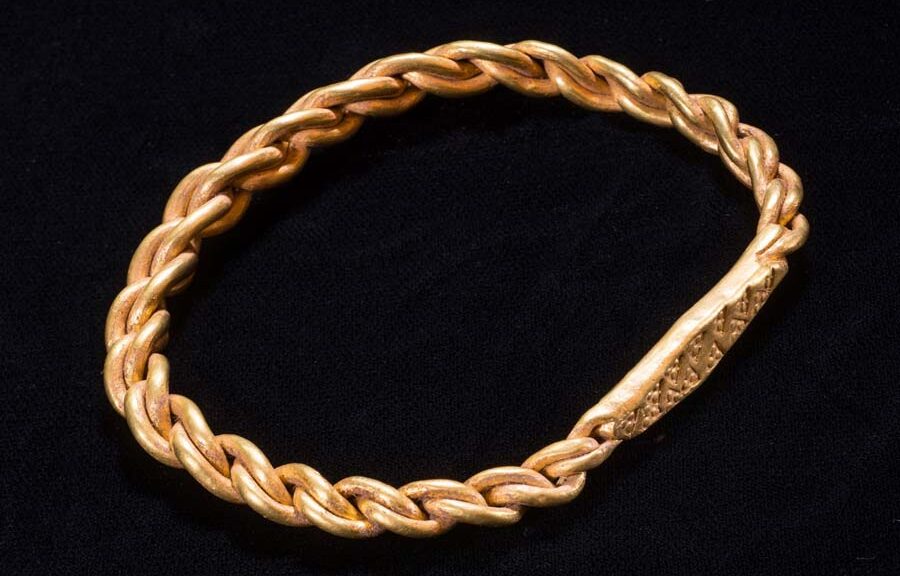Viking treasure including gold bangle buried over 1,000 years ago is found on the Isle of Man
An exceptionally rare Viking artefact is presently being examined on the Isle of Man by Manx Museum authorities and has been declared treasure by the island’s coroner of inquests. The find, which is considered to be internationally significant and believed to be more than 1,000 years old, consists of a gold arm ring, a large silver brooch, at least one silver armband and other associated finds.

This has prompted some people to suspect that they have been hidden somewhere between AD950 and the present day, and were found by an amateur metal detectorist on private land last year.
Under the terms of the Declaration of Treasure, Manx National Heritage, on behalf of the Isle of Man government will be custodians of the finds.

The findings will eventually be part of the permanent collections on display at the Manx National Heritage Museum. Kath Giles, the metal detectorist who discovered the artefacts, said she knew straight away that what she had uncovered was significant.
“I knew I had found something very special when I moved the soil away from one of the terminals of the brooch, but then I found parts of the pin, the hoop and underneath, the gorgeous gold arm ring,” she said. “I’m so thrilled to have found artefacts that are not only so important but so beautiful.”
Allison Fox, curator for archaeology at Manx National Heritage, said the museum received a phone call from Giles late last year, and with her help was able to document the site to ensure there were no further objects remaining in the ground.
“The arm ring is a rare find. Gold items were not very common during the Viking age. Silver was by far the more common metal for trading and displaying wealth. It has been estimated that gold was worth 10 times the value of silver and that this arm ring could have been the equivalent of 900 silver coins,” she said.

“Kath’s hoard can be dated on stylistic and comparative grounds to about AD950, a time when the Isle of Man was right in the middle of an important trading and economic zone. The Viking and Norse influence remained strong on the island for a further 300 years, long after much of the rest of the British Isles.”
Under the Isle of Man Treasure Act 2017, when archaeological artefacts are found there is a legal obligation for the findings to be reported to Manx National Heritage.
If the artefacts fall under the categories of the act, they must also be reported to the coroner of inquests. The coroner decides whether an artefact is a treasure and if it is found to be so, a financial reward is usually paid to the finder and landowner.
The exact value of the findings, as well as the value of the rewards, are yet to be determined. Fox said the reward would be based on a market value for all the artefacts. This will be assessed independently, usually by the treasury valuation committee.
Fox added: “At the moment, we know its historic and cultural value to the history of the Isle of Man, but its financial value will be assessed in the future.”
This month, the Department for Digital, Culture, Media and Sport revealed that more than 1,300 pieces of treasure were found in the UK throughout 2019, the largest haul since records began.
That year, two metal detectorists who discovered a Viking hoard estimated to be worth as much as £12m were given lengthy jail terms after failing to report their findings.
